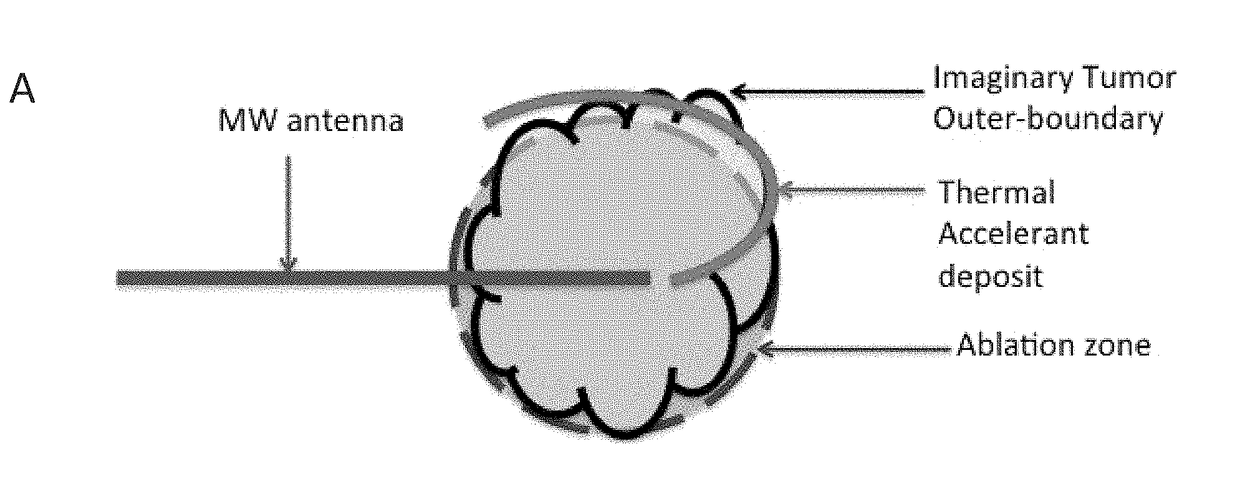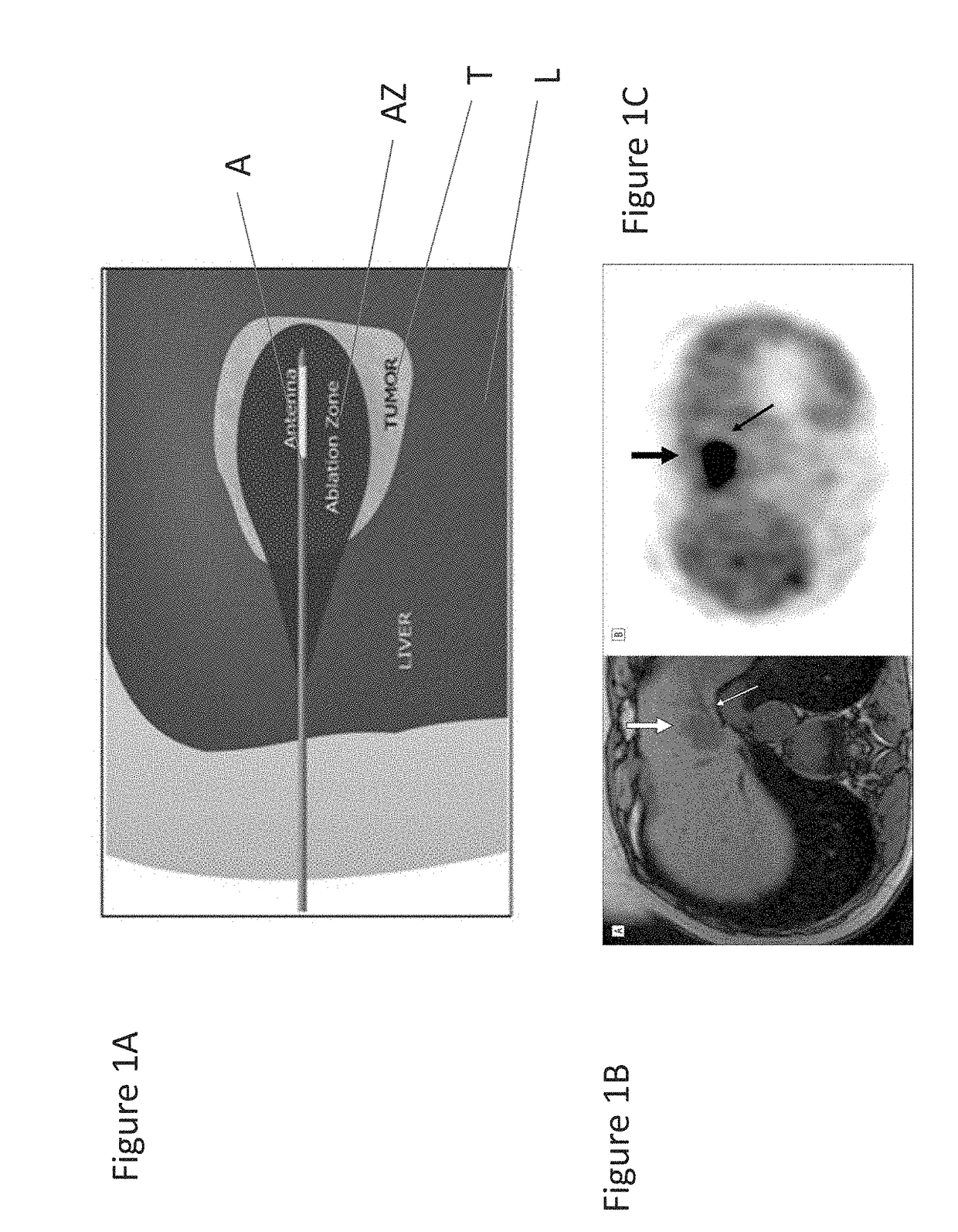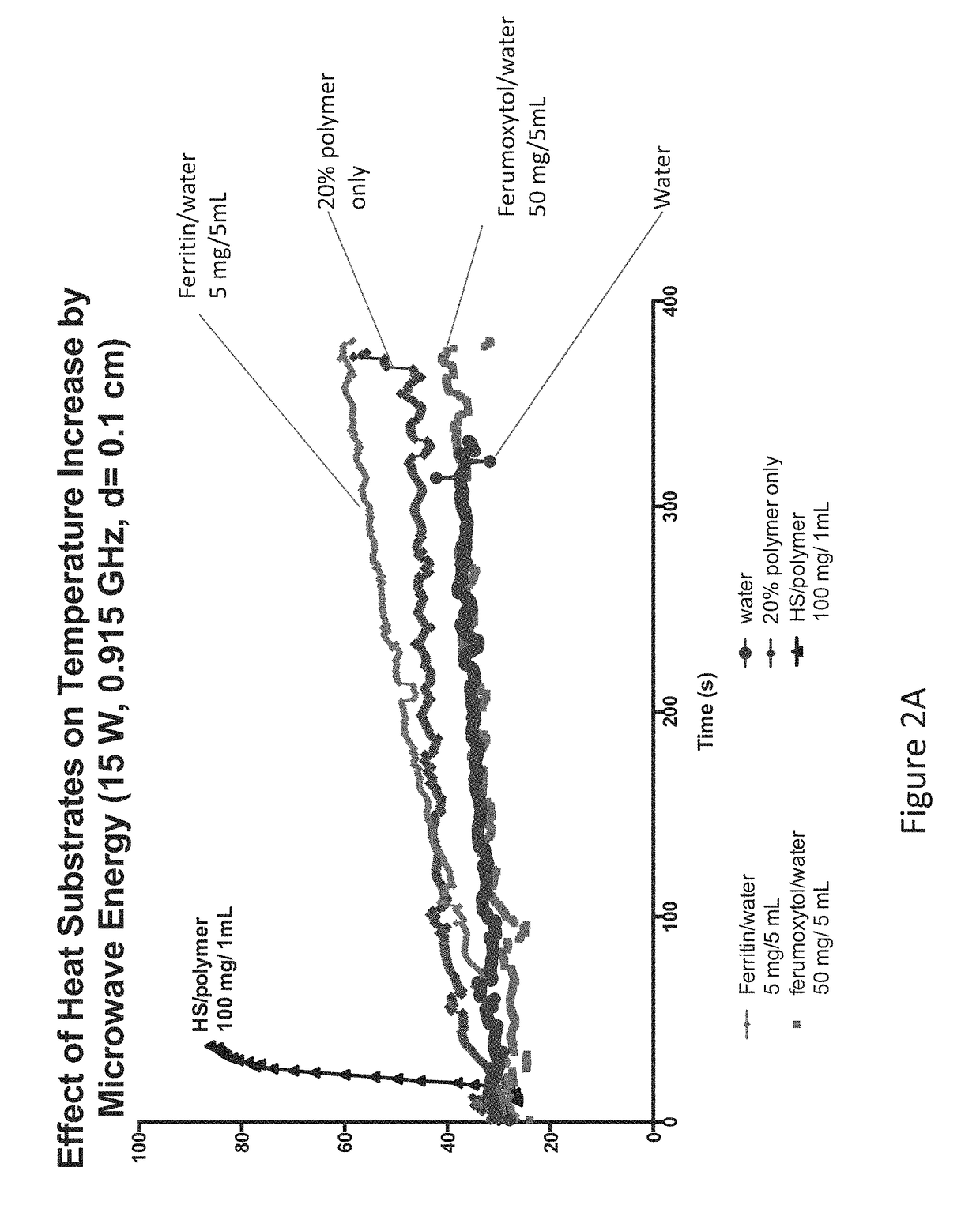Thermal accelerant compositions and methods of use
a technology of thermal accelerant and composition, which is applied in the field of methods, materials and equipment for hyperthermal tissue ablation, can solve problems such as irregularablation, and achieve the effects of complete, complete, and surgically effective ablation of tumor sites
- Summary
- Abstract
- Description
- Claims
- Application Information
AI Technical Summary
Benefits of technology
Problems solved by technology
Method used
Image
Examples
example 1
[0035]To mitigate the problem of inadequate heating, applicants devised a novel heat substrate to selectively increase heating and, by suitable placement, avoid undesirable cooling or ‘heat sink’ effects. This substrate is made of cesium chloride (CsCl) and is compounded in a reverse phase transition polymer to be positioned, and then activated by microwave energy from a distance. The reverse phase transition polymer, which may, for example be a PLGA-PEG-PLGA block copolymer of suitable viscosity, transforms into a gel at body temperature or above and with the cesium chloride salt strongly responds to microwave radiation and locally increases the temperature to more effectively ablate tumor cells that lie just outside of ablation zone AZ of FIGS. 1A, 1B and 1C. Furthermore, this heat substrate is an excellent contrast agent by itself, and was found to be visible under CT imaging. These properties make it particularly efficacious for treating solid tumors, where a physician can contr...
example 2
Preliminary Study: Augmentation of Microwave Energy
[0048]As a proof of concept, we tested the efficiency of the heat substrate in augmenting the microwave energy. Using a phantom (1% (w / v) agarose medium), temperature increase by a control and the heat substrate (two concentrations: 100 mg / mL and 250 mg / mL, respectively) was measured over time. Under the MW conditions (60 W, 915 MHz, 10 minutes), a maximum ablation zone attained is typically 2.5 cm in diameter (i.e., a zone extending a distance 1.25 cm from the antenna). This distance and the conditions were used as a baseline platform to evaluate the augmentation efficiency of the heat substrate. As depicted in FIG. 6B the heat substrate was placed at 1.5 cm from the antenna, and was heated by MW energy transferred through an MW antenna (MicrothermX® Perseon Medical, Salt Lake City, Utah) to reach tumoricidal temperature (>60° C.). Temperature plots are shown in FIG. 6A. The thermal accelerant was found to augment the MW energy in ...
example 3
[0049]A preliminary study of the thermal accelerant as a CT contrast agent was carried out. Various concentrations of the thermal accelerant (TA) solutions were prepared and measured for their CT contrast. FIG. 2C shows the TA solution with the concentration as low as 10 mg / mL produced a discernable contrast as compared to water. The degree of the CT contrast was found to be proportional to the concentration of the thermal accelerant (TA), so the TA solution is CT visible. The upper portion of FIG. 2C shows four samples 1)-4) as follows: 1. Distilled water −15 Hu, 2. TA (10 mg / mL) 286 Hu, 3. TA (100 mg / mL) 2056 Hu, 4. TA (1000 mg / mL) 3070 Hu. The lower portion of FIG. 2C shows the same samples with computer-aided enhancement. The lowest concentration 10 mg / mL TA yields a discernible contrast compared to water in CT. GE Optima 580 W CT scanner. Used CT protocol: 120 kV, 50 mA, 0.8 second rotation, 0.562:1 pitch, and 16×.625 mm detector configuration. Radiation output (CTDIvol) was 12...
PUM
 Login to View More
Login to View More Abstract
Description
Claims
Application Information
 Login to View More
Login to View More - R&D
- Intellectual Property
- Life Sciences
- Materials
- Tech Scout
- Unparalleled Data Quality
- Higher Quality Content
- 60% Fewer Hallucinations
Browse by: Latest US Patents, China's latest patents, Technical Efficacy Thesaurus, Application Domain, Technology Topic, Popular Technical Reports.
© 2025 PatSnap. All rights reserved.Legal|Privacy policy|Modern Slavery Act Transparency Statement|Sitemap|About US| Contact US: help@patsnap.com



